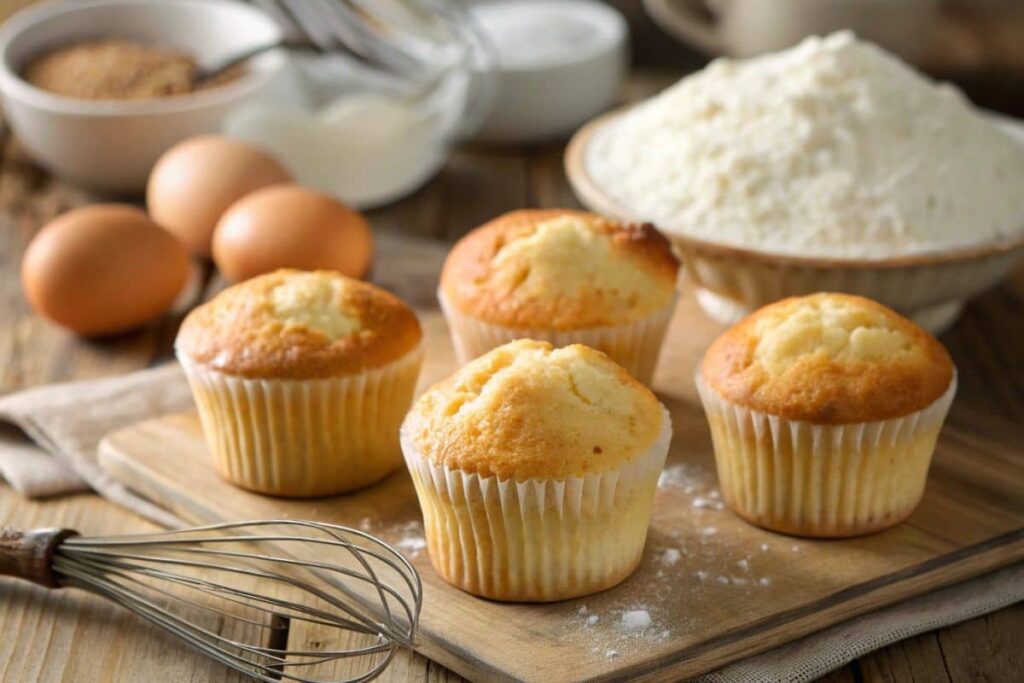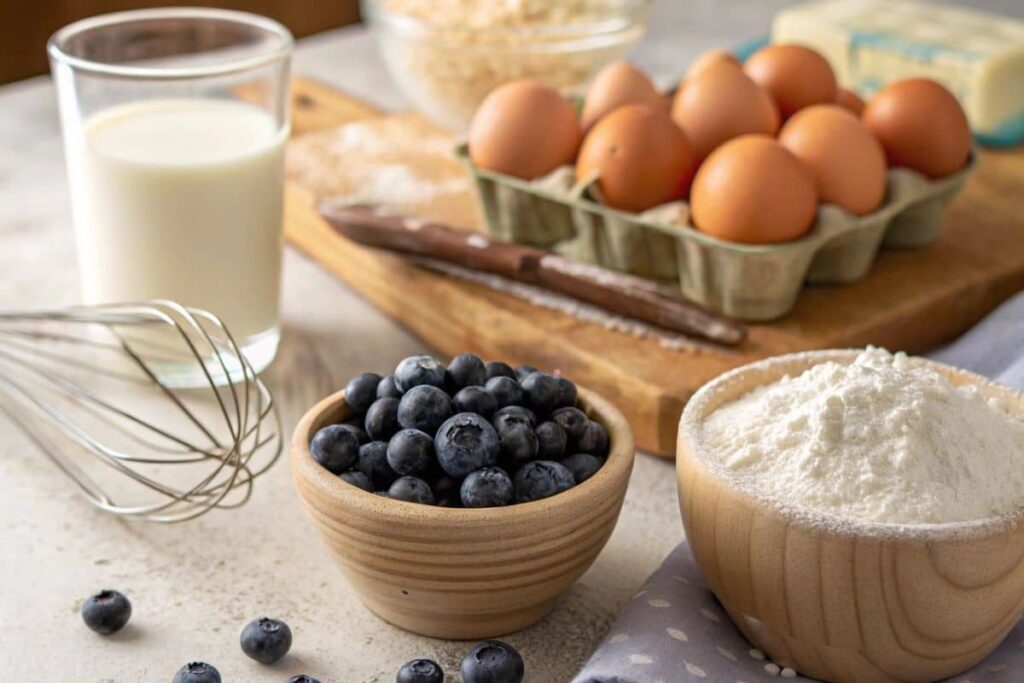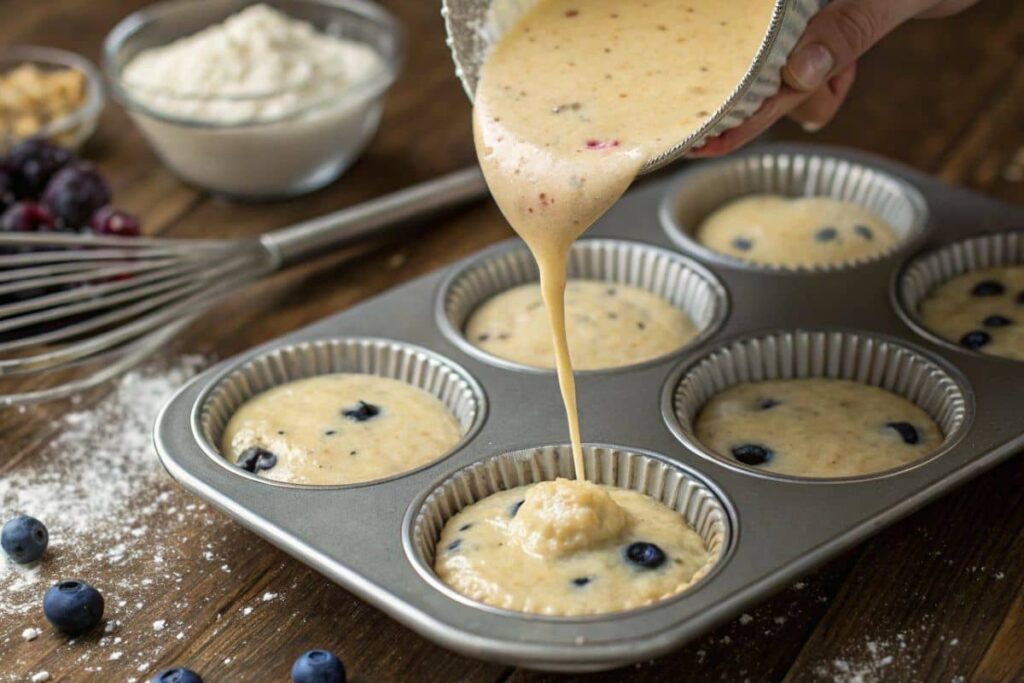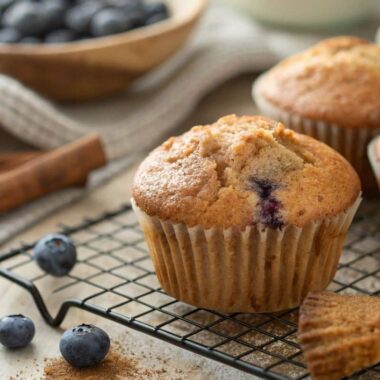Oh, the heartbreak! Have you ever eagerly opened your oven, dreaming of light, fluffy gluten-free muffins, only to be met with… well, let’s just say less-than-ideal results? Dense, sad little muffins can be such a baking bummer, and trust me, I’ve had my fair share of those moments! It felt like a quest sometimes, trying batch after batch. But guess what? After lots of mixing, tweaking, and maybe a few sighs, I finally figured it out! This recipe is the real deal, it delivers those gorgeous, perfectly risen muffins that taste absolutely incredible. We’re not talking “good for gluten-free” here; we’re talking genuinely, unbelievably delicious, period!

Why This Recipe Works Every Time
- Perfect Science: The careful balance of leavening agents ensures a beautiful rise
- Smart Techniques: Room temperature ingredients and resting time make all the difference
- Versatile Base: Customize with your favorite mix-ins without compromising texture
- Foolproof Method: The temperature shift during baking creates the perfect dome
Ingredients Breakdown
- Gluten-Free Flour Blend: Make sure yours includes xanthan gum for structure (this is crucial for rise!)
- Baking Powder & Baking Soda: The dynamic duo that creates those beautiful air bubbles
- Salt: Enhances flavor and strengthens the protein structure
- Coconut Sugar: Adds moisture and caramel notes; regular sugar works great too
- Eggs: Provide structure, moisture, and binding power
- Applesauce: The secret moisture-keeper that helps create a tender crumb
- Coconut Oil: Adds richness without weighing down the batter
- Milk: Creates the perfect batter consistency for optimal rise
- Vanilla Extract: Because everything tastes better with vanilla!
- Apple Cider Vinegar: The unsung hero that activates the baking soda for extra lift
Note: Complete ingredients with measurements are available in the recipe card below this article.
The Secret to Perfect Gluten-Free Muffin Rise
Let me share what took me years to discover: gluten-free baking isn’t just about substituting flour. It’s about understanding the science behind the rise! Without gluten’s stretchy network to trap air bubbles, we need to create structure in different ways.
Step 1: Temperature Matters
Start with room temperature ingredients. Cold eggs and milk can shock your batter and prevent proper rising. I set mine out about 30 minutes before baking.
Step 2: The Perfect Mix
Whisk those dry ingredients thoroughly! This distributes the leavening agents evenly, ensuring no sad, flat spots in your muffins.
Step 3: Gentle Handling
When combining wet and dry ingredients, channel your inner pastry chef and fold gently. Overmixing is the enemy of fluffy muffins, gluten-free or not!
Step 4: The Rest is History
Here’s the game-changer: let that batter rest for 10-15 minutes before baking. This allows the gluten-free flours to hydrate properly and the leavening agents to activate. Trust me, don’t skip this step!
Step 5: The Temperature Trick
Starting with a hotter oven (375°F) creates an initial burst of rise, then reducing to 350°F allows the muffins to cook through without over-browning. This professional technique makes all the difference!
Pro Tips for Muffin Success
- Fresh Leavening Agents: Baking powder and baking soda lose potency over time. If yours have been sitting in the pantry for over 6 months, it’s time for fresh ones!
- Don’t Open the Oven: Resist the temptation to peek during the first 15 minutes of baking. That temperature drop can cause your muffins to sink.
- Fill Properly: Filling your muffin cups ¾ full gives them room to rise without overflowing.
- Measure Accurately: Gluten-free baking is less forgiving with measurement errors. Consider using a kitchen scale for precision.

Troubleshooting Common Issues
If you’ve tried other recipes without success, here’s what might have gone wrong:
- Dense, Heavy Muffins: Usually caused by overmixing or old leavening agents
- Muffins That Rise Then Fall: Often due to opening the oven too early or too much liquid in the batter
- Gummy Texture: Typically from not enough structure-builders or insufficient baking time
- Dry, Crumbly Muffins: Usually from too much flour or not enough fat/moisture
Storing Your Perfect Muffins
These muffins stay fresh in an airtight container at room temperature for up to 3 days. For longer storage, refrigerate for up to a week or freeze for up to 3 months. To reheat, microwave for 15-20 seconds or warm in a 300°F oven for 5-7 minutes.
FAQs About Gluten-Free Muffins
Can I use a different gluten-free flour blend?
Yes, but make sure it contains xanthan gum. If your blend doesn’t include it, add ¼ teaspoon to the recipe.
Why is my batter thicker than regular muffin batter?
Gluten-free batters often start thicker but will relax during the resting period. If it seems too thick after resting, add 1-2 tablespoons of milk.
Can I make these egg-free?
Yes! Replace each egg with a flax egg (1 tablespoon ground flaxseed mixed with 3 tablespoons water, let sit for 5 minutes until gel-like).
How can I make these muffins sweeter?
Feel free to increase the sugar to ¾ cup or add a tablespoon of honey or maple syrup to the wet ingredients.
Honestly, these gluten-free muffins have become my secret weapon! They’re my absolute go-to whenever I need a guaranteed winner, something I know everyone will rave about. And the best part? The texture is so incredibly perfect, light, moist, and fluffy, that nobody ever guesses they’re gluten-free!
Seriously, they just taste like amazing muffins. Whether you whip them up for a quick breakfast, pack them as snacks, or feature them in a lovely brunch spread, they always disappear fast. These muffins are a shining example of what Five Cups Recipes is all about: proving that living gluten-free doesn’t mean sacrificing flavor or beauty. Delicious, accessible, and totally satisfying, that’s the goal, and this recipe nails it!


Gluten-Free Muffin Recipe
Ingredients
Dry Ingredients:
- 1 ¾ cups gluten-free flour blend with xanthan gum included
- 2 teaspoons baking powder
- ½ teaspoon baking soda
- ½ teaspoon salt
- ½ cup coconut sugar or regular sugar
- ½ teaspoon cinnamon optional
Wet Ingredients:
- 2 large eggs room temperature
- ½ cup unsweetened applesauce
- ¼ cup melted coconut oil or butter
- ⅔ cup milk or dairy-free alternative like almond milk
- 1 teaspoon vanilla extract
- 1 teaspoon apple cider vinegar
Optional Add-Ins:
- ½ cup fresh blueberries chocolate chips, or chopped nuts
Instructions
Preheat & Prep:
- Preheat oven to 375°F (190°C).
- Line a 12-cup muffin tin with paper liners or lightly grease the cups.
Mix the Dry Ingredients:
- In a large bowl, whisk together the gluten-free flour blend, baking powder, baking soda, salt, sugar, and cinnamon.
Mix the Wet Ingredients:
- In another bowl, beat the eggs lightly.
- Stir in applesauce, melted coconut oil (or butter), milk, vanilla extract, and apple cider vinegar.
Combine Wet & Dry Ingredients:
- Gradually add the wet mixture into the dry ingredients, folding gently with a spatula.
- Mix until just combined—do not overmix!
Add Optional Ingredients:
- If using blueberries, chocolate chips, or nuts, fold them in.
Rest the Batter:
- Let the batter sit for 10-15 minutes to hydrate the gluten-free flour.
Fill the Muffin Cups:
- Divide batter evenly among muffin cups, filling them about ¾ full.
Bake:
- Bake at 375°F (190°C) for 5 minutes, then reduce heat to 350°F (175°C) and bake for another 15-18 minutes.
Check for Doneness:
- Insert a toothpick—if it comes out clean, they’re ready!
Cool Before Eating:
- Allow muffins to cool in the pan for 5 minutes, then transfer to a wire rack.
Notes
✔ Room temperature ingredients help muffins rise better.
✔ Resting the batter improves texture.
✔ Store leftovers in an airtight container for up to 3 days at room temperature or 1 week in the fridge.
Want to improve your gluten-free baking even further? Check out these related guides:
